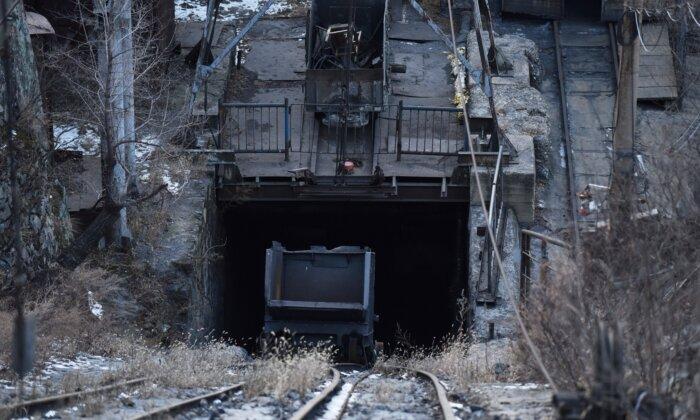Almost a million coal jobs could be lost by the middle of this century as mines worldwide retire, with nearly 100 workers potentially losing employment daily by 2035, even without any pro-climate policies being implemented.
Moreover, “the coal industry could shed 414,200 mining jobs by 2035—nearly 100 workers per day—regardless of climate pledges or coal phase-out targets.” Such workers are employed in mines which would reach the end of operation by this time.
“The coal industry has a long list of mines that will close in the near term—many of them state-owned enterprises with a government stake,” said researcher Global Energy Monitor, according to an Oct. 9 GEM press release.
“Governments need to shoulder their share of the burden to ensure a managed transition for those workers and communities as we move into a clean energy economy.”
Even prior to making commitments to phase out coal, the ten largest coal producers could collectively cut 243,100 industry jobs by 2050.
At present, there are almost 2.7 million workers responsible for 93 percent of the world’s coal. If nations and businesses pursue the plan of phasing down coal in a bid to limit global warming to 1.5 degrees Celsius, only 252,200 workers would be necessary to maintain production globally.
The vast majority of job losses would be in Asia, with China and India taking the brunt. While China employs 1.5 million workers, India has 337,400 people employed in the sector.
As for the United States, the GEM report estimates more than 15,000 jobs in the coal sector to be lost per decade in the 2030s and 40s, and less than 15,000 jobs to be lost in the 2050s. For the current decade, the report estimates a job loss of below 15,000.
Some of the producers expected to be hit the hardest are Coal India, Glencore, Peabody Energy, China Energy, and the Siberian Coal Energy Company.
The report suggested that laid-off coal workers could be employed in the renewable energy sector.
Biden’s Anti-Coal Push
The GEM report comes as the United States has seen a decline in coal jobs under the current Biden administration. According to the U.S. Department of Energy’s (DOE) U.S. Energy & Employment Jobs Report (USEER), coal electric power generation (EPG) was the “only EPG technology in which employment declined” last year.
In 2022, coal EPG shed 6,780 jobs, a decrease of 9.6 percent from the previous year. On the other hand, employment in solar and wind grew.
Last year, President Joe Biden had committed to shutting down coal-powered energy plants.
At the time, Senator Joe Manchin (D-W.Va), who represents West Virginia, a coal-producing state, called Biden’s remarks “outrageous and divorced from reality.’
“Comments like these are the reason the American people are losing trust in President Biden and instead believe he does not understand the need to have an all-in energy policy that would keep our nation totally energy independent and secure,” he said.
In an interview with The Epoch Times, Michelle Bloodworth, CEO of the coal plant trade organization America’s Power, raised concerns about the impact of new rules on coal plants.
“We remain concerned that the combined effects of EPA rules, including a final MATS (Mercury and Air Toxics Standards), will cause more premature retirements of coal plants at the same time grid operators are issuing warnings about the increased reliability risks to the grid due to coal retirements,” she said.
New coal plants having pollution controls cut down nitrogen oxides by 83 percent, sulfur dioxide by 98 percent, and particulate matter by 99.8 percent compared to plants without controls, it said.
The report also predicted that new coal production of 145-345 million tons over three decades could result in 47,500 coal mining jobs as well as $139 billion in carbon products and 480,000 manufacturing jobs tied to it.
Mr. Moore pointed out that coal was the “critical fuel source” that powered the industrial revolution in America, making the country a superpower.
“Under the Biden plan, we would move technologically in reverse in our energy sources. America got rich by replacing windmills with coal plants, and now, 150 years later, Biden wants to replace coal with windmills,” he wrote.







